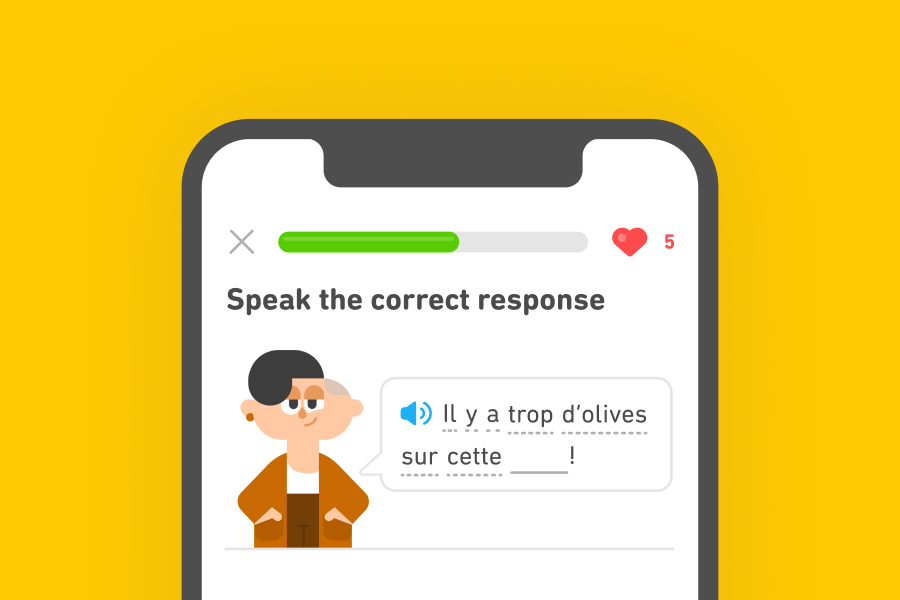Getting into your language groove has never been easier, now that Duolingo has new immersion exercises! In immersion exercises, you'll strut your linguistic stuff by reading, thinking, and responding entirely in your new language. You'll make the most of your study time by strengthening connections in your new language and really putting it center stage.
In this post, you'll learn about our new immersion exercises and how they support getting more comfortable in your new language!
What's an immersion exercise?
Immersion exercises focus on using your new language, and only your new language, in clever dialogues, conversations, and reading exercises. To answer immersion exercises correctly, you'll need to understand what you read or hear in the language in order to solve the puzzle. That might mean filling in a blank, completing a dialogue, or showing that you followed the meaning of some text. You'll find these immersion exercises among the mix of questions you get in your regular lessons.
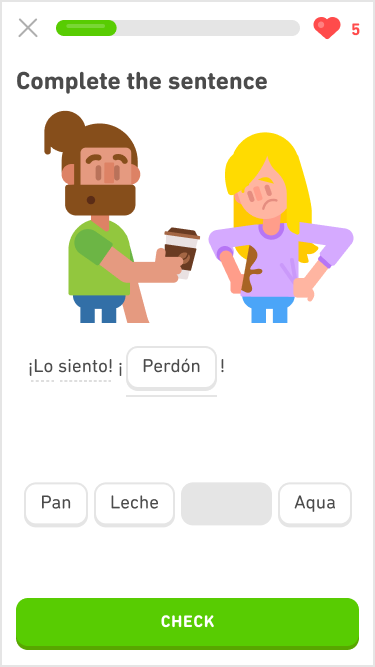 |
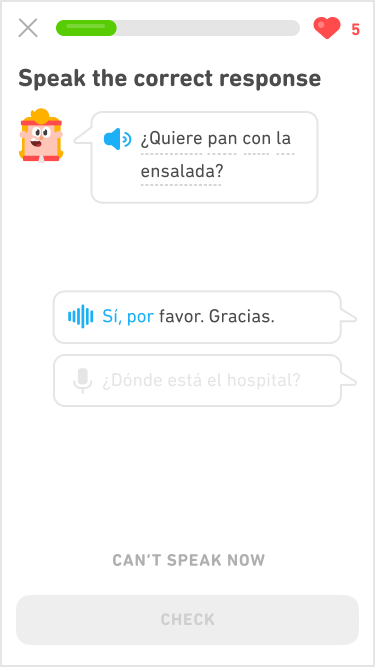 |
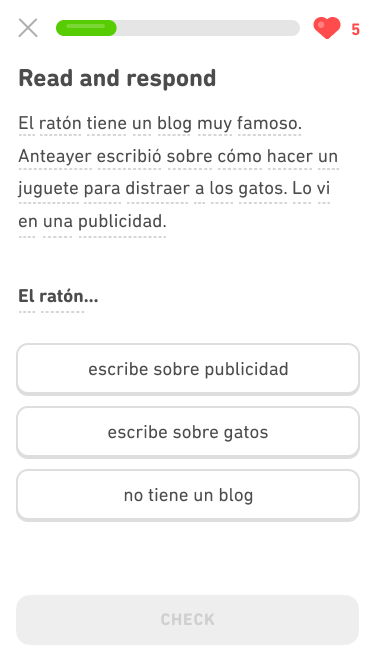 |
It's trickier to design exercises that don't rely on translation to check meaning, and even using translations is complicated. Our curriculum and language experts solved this challenge by developing exercises filled with context clues, like images and information in surrounding text. The result is this new series of fun, interactive exercises that get you seeing more of your new language, and doing more with it.
Helping you build stronger connections
Learning a language requires building up a whole new system for expressing ideas. One of the reasons this is so hard is because as adults, we already have a very well-developed system in place: our first language(s)! Your brain has spent decades building strong connections in your brain between words, called forms (like "cat"), and their meanings (like that category of little fluffy animals that like to sit on keyboards while their housemates try to work).
When you learn a new language, your brain first links a new form (like "gato" in Spanish) with its translation ("cat") in your already-developed language system—not with the meaning itself. That's why it can feel like you're translating every single bit in your head, because your brain is processing your new language through your own language. This is part of why using a new language can feel slow and clunky.
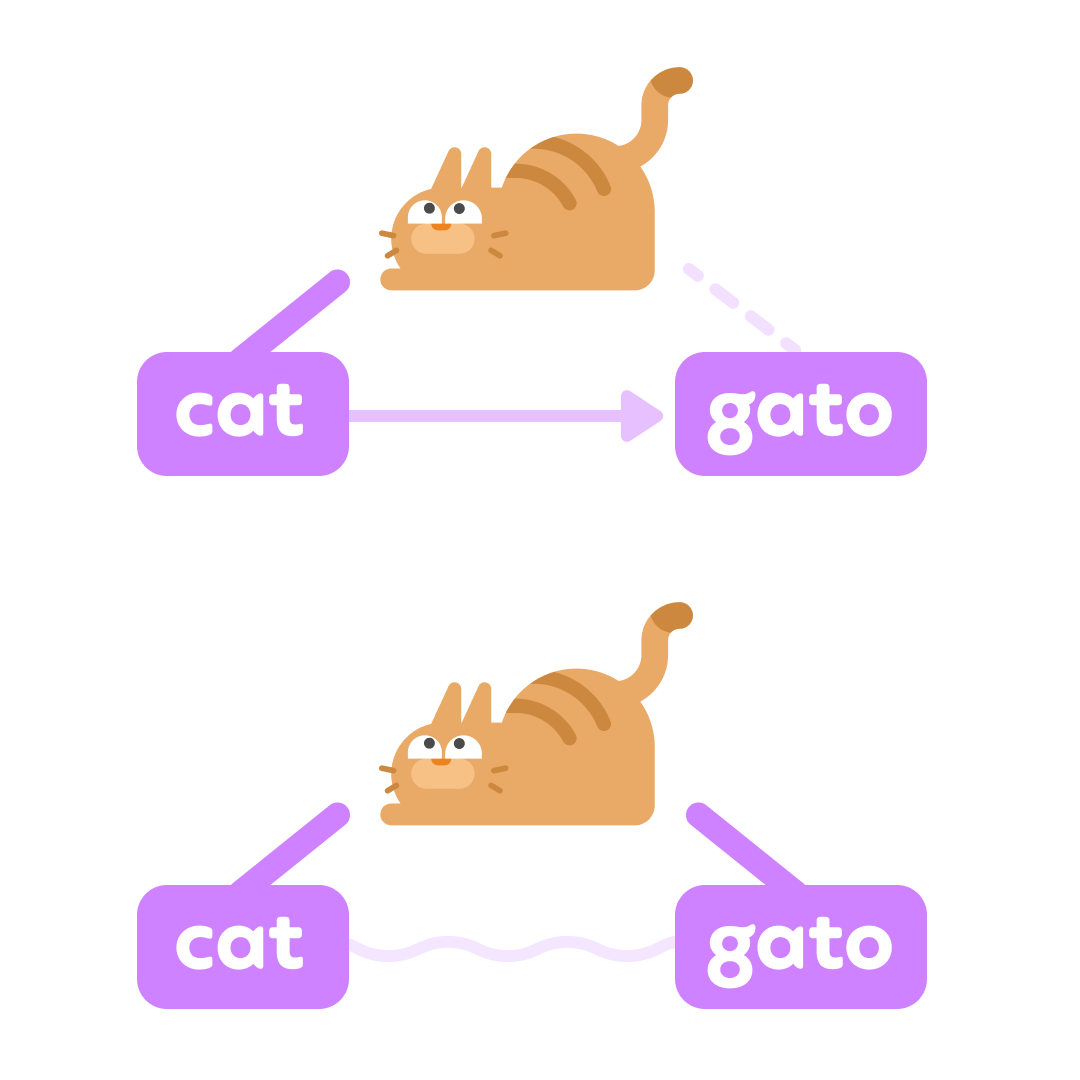
To get comfortable using your new language—speaking, writing, reading, and listening to it—your brain needs chances to build connections directly between meanings and their forms in the new language. This is just what happens in immersion exercises!
Strong, direct connections help you understand and produce the language faster, since you can jump right from a meaning to the new form. This practice also makes it less likely that your own language will sneak into what you're trying to do in your new language, like in word-for-word mistranslations.
Look out for immersion exercises!
Duolingo's immersion exercises get you using your new language more, and they help you build connections for understanding and expressing yourself as efficiently as possible.
Immersion exercises are available in the Spanish and French courses for English speakers and in the English courses for Spanish and Portuguese speakers on iOS, Android, and our website.
